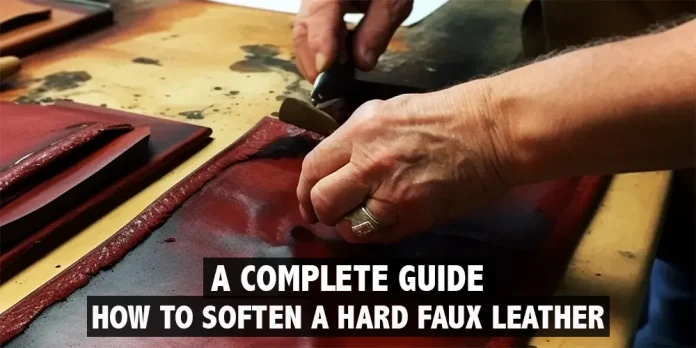How to Soften a Hard Faux Leather
Faux leather (also called synthetic leather) has long been recognized for its affordability, eco-friendliness, and cruelty-free production; however, when new or exposed to elements over time it may feel stiff resulting in uncomfortable jackets or bags that lack appeal and have lost their luster. There are thankfully numerous techniques that can soften hard faux leather without damaging its surface surface.
In this guide, we’ll go through various methods for softening faux leather and maintaining its suppleness for prolonged use.
Why Does Faux Leather Become Hard?
Before embarking upon any softening methods, it’s essential to understand why faux leather becomes stiff or hard over time. Faux leather typically comprises synthetic materials like polyurethane (PU) or polyvinyl chloride (PVC), which tends to be less flexible than real leather and cause its rigidity over time. There may also be other reasons why the faux leather becomes hard:
- Exposure to Heat and Sunlight: Excessive exposure to UV rays or high temperatures can dry out faux leather, hardening it over time and increasing cracking likelihood.
- Aging: Faux leather may slowly lose its soft texture as time goes on due to changes in synthetic materials used. As this occurs, its rigidity increases.
- Improper Storage: Storing faux leather items too closely together may result in permanent creases and make the material unflexible over time, potentially becoming inflexible as time progresses.
- Lack of Conditioning: Faux leather requires consistent care to retain its flexibility, just like real leather does. Regular care may extend its longevity.
Methods to Soften Hard Faux Leather
Here are a few effective and safe techniques that will soften hard faux leather jackets, bags, or furniture to make them more comfortable and accessible for everyday use.
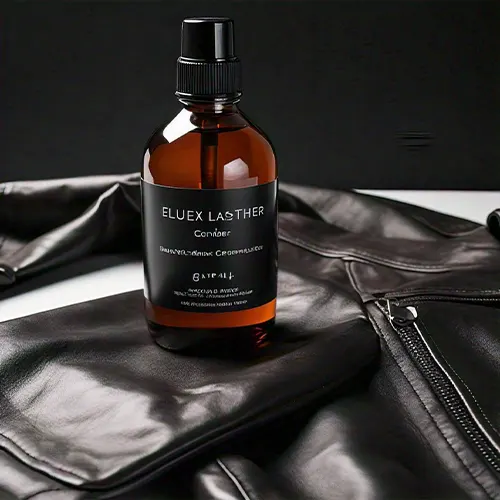
1. Use a Faux Leather Conditioner
Leather conditioners can do more than just soften real leather, they also work wonders on faux leather materials like vinyl. A quality conditioner will nourish synthetic fibers that soften up faux leather material for a more flexible yet flexible feel.
How to Apply:
- Select a conditioner specifically formulated to nourish faux leather materials or one that can safely condition synthetic materials.
- Apply a small amount of conditioner onto a clean and soft cloth.
- Apply faux leather conditioner in circular movements until full coverage has been attained.
- Allow it to soak into the material for several hours (or according to its instructions).
- Wipe away any excess with a dry cloth.
Impact: Conditioning helps restore moisture and elasticity to faux leather products, softening their feel for greater wearability and comfort.
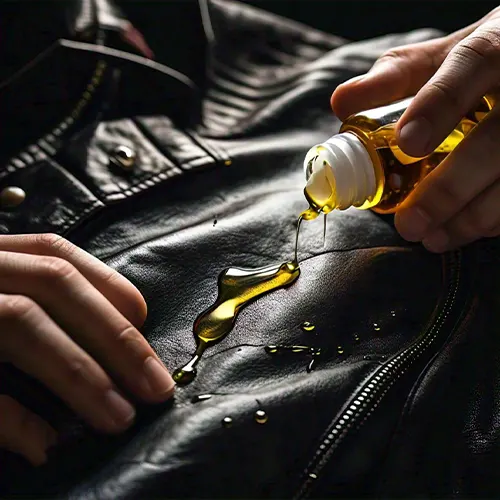
2. Use Coconut Oil or Baby Oil
Coconut and baby oils can also help soften faux leather, however, use them with caution as too much may leave unsightly greasy marks or permanent stains behind.
How to Apply:
- Clean faux leather surfaces using a damp cloth to eliminate dirt or dust build-up.
- Apply a small amount of oil onto a microfiber cloth or sponge and rub lightly to apply.
- Rub oil onto the material using gentle circular motions.
- Allow for approximately 1-2 hours for the oil to absorb into your faux leather and allow the leather to fully soften before continuing with step 5.
- Wipe away any excess oil with a clean, dry cloth.
Impact: Oils will hydrate the material, softening and softening stiff faux leather material while also increasing flexibility. Care should be taken not to apply too much oil as excess can leave behind residue that needs cleaning off later on.
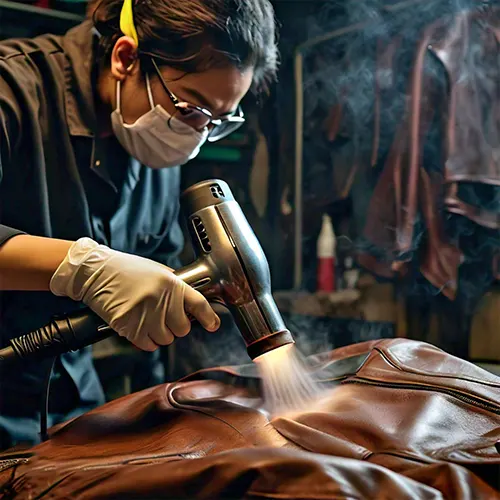
3. Heat Treatment Using a Hair Dryer
Heat can temporarily soften faux leather, making it easier to mold and wear. But be wary – too much heat could result in damage or melting of the material.
How to Apply:
- Set your hairdryer between low to medium heat settings.
- Keep the hairdryer about 6-8 inches from the faux leather surface when using it to blow dry it.
- Gently warm the material using a circular motion, taking care not to remain still for too long in one spot.
- Once the material feels warm to the touch, flex and move the faux leather to soften its edge and soften its feel.
Impact: Heat loosens up faux leather fibers to make them more flexible and comfortable, however, too much heat could damage its material so only use this approach occasionally.
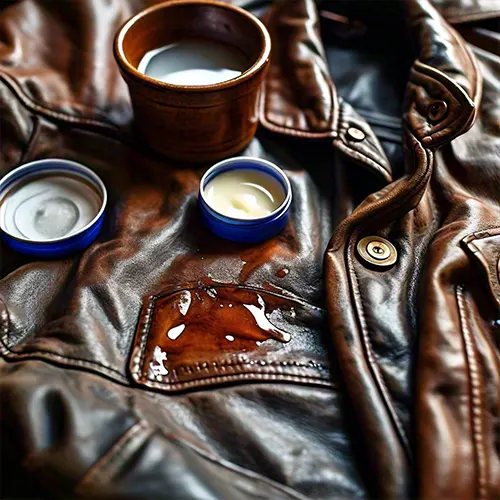
4. Use Rubbing Alcohol and Vaseline
An effective combination of rubbing alcohol and Vaseline can soften faux leather while still maintaining its aesthetic qualities.
How to Apply:
- Saturate a cotton ball or cloth with rubbing alcohol and use it to rub over stiff areas on faux leather, such as seams.
- Permit the alcohol to evaporate naturally.
- Once dry, apply a small amount of Vaseline onto a soft cloth to seal in moisture and provide extra lubrication for easy brushing and towing.
- Gently rub Vaseline into faux leather using circular motions, then allow it to sit for several minutes before giving another application.
- Wipe off any excess with a clean, dry cloth.
Impact: Rubbing alcohol opens up pores within faux leather materials while Vaseline works as a moisturizer to soften them further.
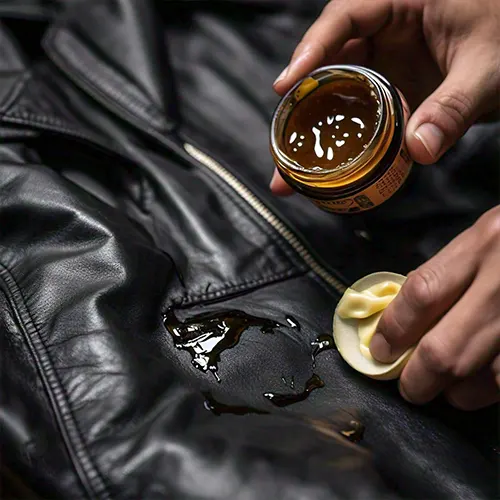
5. Apply Petroleum Jelly
Petroleum jelly (Vaseline) can also help soften faux leather without harming it, its moisturizing action loosens rigid fibers for easier stretching.
How to Apply:
- Clean faux leather surfaces using a damp cloth to eliminate dirt or dust accumulations.
- Apply some petroleum jelly on a microfiber cloth and spread evenly with it.
- Rub jelly over stiff areas on faux leather by gently massaging in.
- Allow the jelly to remain undisturbed for approximately an hour so it may absorb into your material.
- Use a clean and dry cloth to wipe down the surface to eliminate excess jelly.
Impact: Petroleum jelly will add moisture and flexibility to faux leather, softening its edges.
Preventing Faux Leather from Becoming Stiff
Once you’ve softened a faux leather jacket or accessory, it must remain flexible over time. Here are a few strategies for maintaining its softness:
- Store Properly: Store jackets on padded hangers in a cool, dry environment to avoid creasing or stiffening in faux leather items. Avoid folding or compressing these products too tightly as this could result in wrinkles or stiffening over time.
- Avoid Direct Sunlight: Prolonged exposure to sunlight can dry out faux leather, causing it to become hard. Store faux leather products away from windows or direct sunlight.
- Condition Regularly: Apply a faux leather conditioner regularly to maintain an ideal moisture balance in the material and extend its longevity.
- Keep Away from Excessive Heat: Keep heat sources such as radiators or heaters away from faux leather products as this could dry it out and damage its integrity.
- Clean Regularly: Keep faux leather clean with regular dust wiping using a damp cloth to avoid dust accumulation that could eventually lead to stiffening over time.
Conclusion
Softening hard faux leather is an easy and efficient process that will improve both its comfort and longevity. By applying methods such as conditioning, oils, or gentle heat sources you can restore flexibility without creating damage to the material itself. Regular care for faux leather ensures it will continue to stay smooth, soft, and in great condition over time.
By following these techniques and tips, not only will you extend the lifespan of faux leather products but you will ensure they continue to look stylish while remaining comfortable to use.


